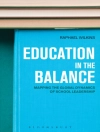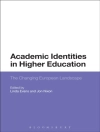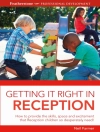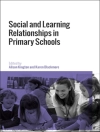Ever wondered what it would be like to be a street magician in Paris? A fish farmer in Norway? A costume designer in Bollywood? This playful and accessible look at different types of work around the world delivers a wealth of information and advice about a wide array of jobs and professions. The value of this book is twofold: For young people or middle-aged people who are undecided about their career paths and feel constrained in their choices, A World of Work offers an expansive vision. For ethnographers, this book offers an excellent example of using the practical details of everyday life to shed light on larger structural issues.Each chapter in this collection of ethnographic fiction could be considered a job manual. Yet not any typical job manual—to do justice to the ways details about jobs are conveyed in culturally specific ways, the authors adopt a range of voices and perspectives. One chapter is written as though it was a letter from an older sister counseling her brother on how to be a doctor in Malawi. Another is framed as a eulogy for a well-loved village magistrate in Papua New Guinea who may have been killed by sorcery.Beneath the novelty of the examples are some serious messages that Ilana Gershon highlights in her introduction. These ethnographies reveal the connection between work and culture, the impact of societal values on the conditions of employment. Readers will be surprised at how much they can learn about an entire culture by being given the chance to understand just one occupation. Contributors: Lovleen Bains, Mumbai; Chiwoza Bandawe, University of Malawi; Joshua A. Bell, Smithsonian Institution; Michelle Bigenho, Colgate University; Warren Chamberlain, Vita Needle Company, Massachusetts; Melissa Demian, Australian National University; Ilana Gershon, Indiana University; Kathryn Graber, Indiana University; Graham M. Jones, MIT; Amanda Kemble, University of Michigan; Briel Kobak, University of Chicago; Corinna Kruse, Linköping University, Sweden; Joel Kuipers, The George Washington University; Carrie Lane, California State University, Fullerton; Jean Lave, University of California, Berkeley; John Law, Open University; Heather Levi, Temple University; Marianne Elisabeth Lien, University of Oslo; Caitrin Lynch, Olin College; Loïc Marquet, Paris; Winnifred Fallers Sullivan, Indiana University; Chris Swift, Leeds Teaching Hospitals; Claire Wendland, University of Wisconsin–Madison; Clare Wilkinson-Weber, Washington State University Vancouver; Helena Wulff, Stockholm University
Cuprins
Introduction
by Ilana Gershon1. Letter to a Young Malawian Doctor
by Claire Wendland and Chiwoza Bandawe2. What You Need to Know to Be a Fish Farmer in West Norway
by Marianne Elisabeth Lien and John Law3. How to Be a Magician in Paris
by Graham M. Jones with Loïc Marquet4. Being a Village Court Magistrate in Papua New Guinea
by Melissa Demian5. The Chaplain: Being a Physician of the Soul in a Secular Age
by Winnifred Fallers Sullivan and Christopher Swift6. Being a Crime Scene Technician in Sweden
by Corinna Kruse7. Playing Piano without a Piano in Bolivia
by Michelle Bigenho8. Making Do in Perpetual Crisis: How to Be a Journalist in Buryatia
by Kathryn E. Graber9. How to Be a Professional Organizer in the United States
by Carrie M. Lane10. The Character in Question: How to Design Film Costumes in India
by Lovleen Bains and Clare Wilkinson11. Reflections from a Life on the Line: How to Be a Factory Worker
by Caitrin Lynch and Warren Chamberlain12. How to Be a Cell Phone Repair Technician
by Amanda Kemble, Briel Kobak, Joshua A. Bell, and Joel Kuipers13. Becoming a Professional Wrestler in Mexico City
by Heather Levi14. The Pains and Peaks of Being a Ballerina in London
by Helena WulffAfterword
by Jean LaveList of Contributors
Index
Despre autor
Ilana Gershon is Associate Professor of Anthropology at Indiana University. She is the author of The Breakup 2.0: Disconnecting over New Media and No Family Is an Island: Cultural Expertise among Samoans in Diaspora, both from Cornell. Jean Lave is Professor of Education and Geography at the University of California, Berkeley. She is the author of Cognition in Practice, coauthor of Understanding Practice and Situated Learning, and coeditor of History in Person.












